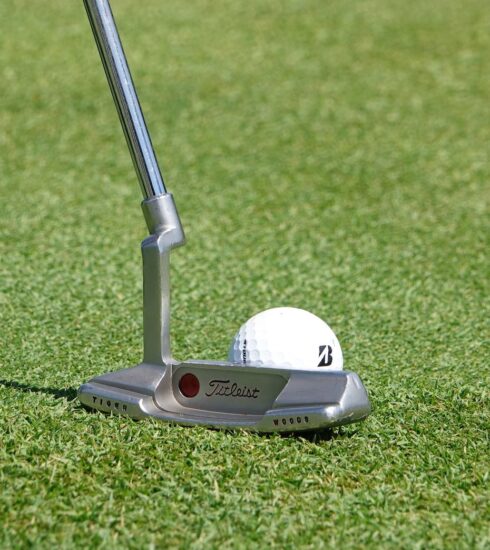Chipping
In reality, chipping might be the single fastest way to lower scores. Think about it – if you miss the green and hit a poor chip, a bogey is almost a sure result. If you miss the green and hit a good chip to within a few feet, you have an excellent chance to save your par. So, the question becomes, how many greens do you miss during a round? Even a good amateur player is going to miss about half the greens, while a less-capable player might miss 13-14 greens during an 18 hole round.
For the sake of some easy math, let’s imagine that you miss ten greens during an average round of golf. If you are currently a poor chipper, you may get those ten chances up and down just twice. By improving your chipping, it is well-within reach to get up and down six out of those ten tries (if not more). That means, by just improving your chipping, you could save four shots a round!
No matter how long you stand on the practice tee hitting drivers, you will never save four shots as quickly as you will with better chipping.
Tip #1 – Use Your Hands
The worst advice that gets passed around on golf courses everywhere is that you should chip using a putting motion. Nothing could be further from the truth. To chip effectively, you need to engage your hands and let them work for you. A putting stroke uses no hand movement, and therefore gets no hinge in the wrists. Hinging your wrists is critical to a good chip shot because it allows the club to get up above the grass and hit down with a descending strike.
Tip #2 – Use One Club
Why try to achieve perfect chipping with several different clubs?
Choose one club, preferably your sand wedge, and get really good and chipping with it. With proper technique, you will be able to hit a wide-range of shots with just the one club, and you will develop confidence by using it time after time.
Tip #3 – Get on the Green at All Costs
Not all chip shots are created equal. Some are hit from short grass right off the side of the green to a hole that is located generously in the middle of the putting surface. Others are hit from deep rough on a downhill lie where the hole is cut right next to the edge. When you get ready to hit a chip shot, evaluate the situation and make a smart choice for the type of shot you are going to try and pull off. There should be one main goal that supersedes all others before executing each chip – you next shot has to be a putt. Don’t try to pull off a miracle chip and leave the ball in the same type of rough on the opposite side of the green. Remember, even if it means a longer putt, make sure the ball finishes on the green.
Tip #4 – Decide Where You Want to Putt From
Unless you hole out your chip shot, you are going to need to make a putt to finish off your up-and-down save. Before you chip, walk up to the hole and decide where you want to putt from to make your job as easy as possible. If the hole is cut on a flat section of the green, your read won’t matter as much and you can simply try to get the chip as close as possible. However, if the hole is on a slope, you are going to want to make sure you are putting uphill. An uphill putt of five feet is often easier than a downhill putt from three feet, so keep that in mind when planning your chip. A good leave can give you confidence to knock the putt in and walk off with your par save.
Tip #5 – Play Long Rough like a Bunker Shot
If you find yourself in some long grass near the green, with your ball sitting down at the bottom, try using your bunker shot technique to splash the ball up, out, and onto the green. A normal chipping motion, with the club face square, will often get tangled in the grass and can be hard to control. Instead, lay the club face open and try using a bigger swing to slide through the grass and float the ball into the air. This shot isn’t easy – but no shot is easy from long rough. With a little practice, you should be able to put the ball on the green consistently from this kind of lie, which will at least give you a chance to make a putt.





